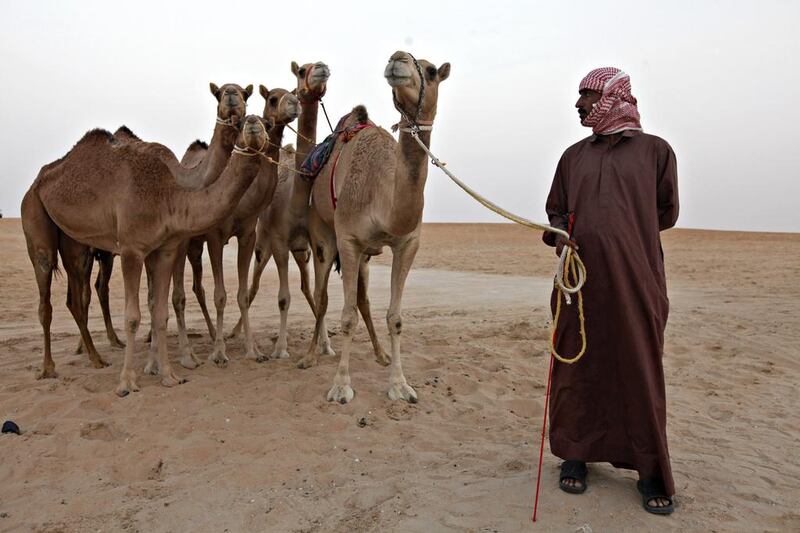In the coming weeks, we will all need to commit them to memory, especially when hailing a cab or giving directions for delivery.
As part of the Onwani project to standardise the capital’s address system, 14 streets in Abu Dhabi were renamed last week.
Gone from the maps are Muroor Road and Sixth Street, popularly known as Al Najda Street.
Instead, the new blue and white municipality signs, springing up across the city, point to Sultan bin Zayed First Street and Fatima bint Murbarak Street.
The names, say the Municipality, are “a tribute to iconic Emirati leaders”, while others hold geographical significance.
Some are familiar, not least Sheikh Zayed bin Sultan Street, the new highway that begins after the bridge that also carries the name of the late President, and extends, through a tunnel, to the Corniche.
Others may require a little more explanation. But with the help of this guide, anyone can become an instant expert on the stories behind the city’s new streets.
Fatima Bint Mubarak Street (6th Street, popularly known as Al Najda Street)
“The Mother of the Nation” and the wife of Sheikh Zayed, Sheikha Fatima is the chairman of the Family Development Foundation, head of the General Women’s Union and a sponsor of numerous organisations in the UAE and overseas
Sheikh Zayed Bin Sultan Street (Al Salam Street)
Ruler of Abu Dhabi from 1966 until 2004 and the first President of the UAE. The street named in his honour is the main highway into the capital and crosses the Sheikh Zayed Bridge
Khalifa Bin Zayed First Street (Khalifa Street)
The eldest son of Zayed the First, often known as Zayed the Great, who died in 1909. Sheikh Khalifa refused to become Ruler of Abu Dhabi twice, in 1909 and 1912, but later assisted in the succession of Sheikh Shakhbut bin Sultan Al Nahyan
Sultan bin Zayed First Street (4th Street or Muroor Road)
Father of Sheikh Zayed and Sheikh Shakhbut and the fourth son of Sheikh Zayed the First. Ruler from 1922-1926
Shakhbout Bin Sultan Street (Al Saada Street)
Became Ruler of Abu Dhabi in 1928, stepping down in favour of his younger brother, Sheikh Zayed in 1966. Under his rule, oil was discovered in Abu Dhabi in 1958, ensuring the country’s prosperity after the economic hardships of the previous three decades
Mubarak bin Mohammad Street (26th Street)
Father of Sheikh Nahyan bin Mubarak Al Nahyan, the Minister of Culture Youth and Social Development. Sheikh Mubarak was the former Minister of the Interior and the grandson of Sheikh Khalifa bin Zayed the First. He died in 2010
Salama bint Butti Street (23rd Street)
The mother of Sheikh Zayed, of Al Hamed family and Al Qubaisi tribe. A major influence on her sons, Sheikh Zayed and Sheikh Shakhbut
Al Bateen Street (32nd Street)
Now perhaps best known for the Intercontinental Hotel, Al Bateen was once a fishing village and boat building community distinct from Abu Dhabi. It was eventually swallowed by the city in the 1970s
Al Dhafra Street (25th Street)
The desert interior of Abu Dhabi, with Madinat Zayed, the home of Al Dhafra football club, as the main population centre. Each year, Al Dhafra Festival sees thousands of camels from the region compete for around Dh46 million in prizes. Al Dhafra is also home to an airbase and the Shams solar power station, the largest of its kind in the world.
Dhafeer Street (31st Street)
Now on the outskirts of Liwa, Dhafeer Fort is one of a chain of fortifications in the Western Region and was built by the Bani Yas, one of the Emirate’s main tribes,
Dihan Street (21st Street)
Another old name for Abu Dhabi. The name may also be descriptive, with another Dihan found in Ras Al Khaimah
Mawgab Street (27th Street)
Mawgab is a fort built on the orders of Sheikh Sultan bin Zayed, the father of Sheikh Zayed and located in one of the villages in the Liwa known as Mahather. The area is low lying, circular in shape and had only one entrance, making it easier to defend
Rabdan Street (29th Street)
The celebrated mount of Sheikh Zayed the First, Rabdan was gift from the Sharif of Mecca, Abdullah bin Hashem, and said to be descended from the horse of the Prophet Muhammed. Rabdan was the subject of several poems, with his bloodline is still present in horses ridden by the Nahyan family.






